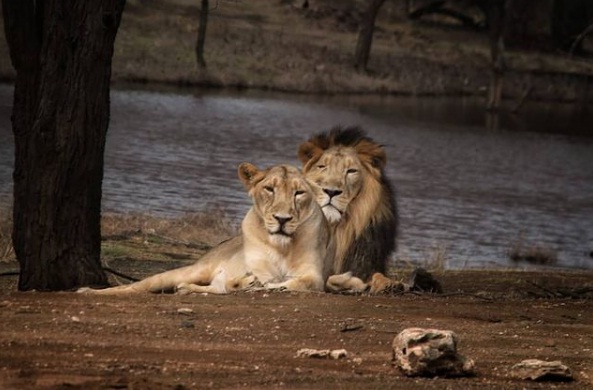Serengeti National Park
History of Serengeti National Park:
The Serengeti National Park, located in Tanzania, is one of the most famous and iconic wildlife reserves in the world. Its history dates back to the early 20th century when it was first established as a game reserve by the German colonial administration in 1921. Later, in 1951, the British colonial authorities expanded the reserve and renamed it as the Serengeti National Park.
The park was primarily created to protect the vast wildebeest migration, one of the most remarkable natural events on Earth. The migration involves millions of wildebeests, zebras, and other herbivores moving in search of fresh grazing lands between the Serengeti and the adjacent Maasai Mara National Reserve in Kenya. This spectacle draws tourists from all over the world to witness the incredible display of wildlife movement.
In recognition of its exceptional biodiversity and significance in conservation, the Serengeti was designated a UNESCO World Heritage Site in 1981. The park covers an area of approximately 14,750 square kilometers (5,700 square miles) and is home to a wide variety of wildlife, including the "Big Five" (lion, elephant, buffalo, leopard, and rhinoceros), cheetahs, giraffes, wildebeests, and many others.
Fact and Attraction of Serengeti National Park:
Fact :
The Serengeti is famous for its annual wildebeest migration, often referred to as the "Great Migration." This incredible wildlife spectacle involves the movement of over 1.5 million wildebeests, along with hundreds of thousands of zebras and gazelles, as they migrate in search of food and water. The migration is a continuous cycle throughout the year, covering a distance of over 1,800 miles. It is one of the most significant and impressive natural events on the planet, attracting wildlife enthusiasts and photographers from around the world.
Attraction:
Hot Air Balloon Safaris - One of the most unforgettable experiences in the Serengeti is taking a hot air balloon safari over the vast plains and witnessing the stunning landscape and wildlife from a unique perspective. The early morning balloon ride offers breathtaking views of the sunrise over the savannah, and you can observe the wildlife from above as they roam freely in their natural habitat. It's a peaceful and awe-inspiring way to experience the Serengeti's beauty and diversity.
Additionally, some other popular attractions in the Serengeti National Park include:
- Ngorongoro Crater: Located near the Serengeti, this UNESCO World Heritage Site is a massive volcanic caldera known for its dense wildlife population, including the "Big Five."
- Olduvai Gorge: Known as the "Cradle of Mankind," this archaeological site has provided valuable insights into human evolution with the discovery of ancient hominid fossils.
- Grumeti and Mara Rivers: These rivers play a crucial role during the annual wildebeest migration, as the animals cross them in search of greener pastures, often facing dramatic encounters with crocodiles and other predators.
- Seronera Valley: This region in the Serengeti is known for its year-round wildlife sightings, making it an excellent area for game drives and wildlife photography.
The Serengeti National Park offers a once-in-a-lifetime safari experience, allowing visitors to witness the wonders of the natural world and the raw beauty of the African wilderness.
Special about Serengeti National Park :
Serengeti National Park is special and renowned for several reasons, making it one of the most iconic and sought-after wildlife destinations in the world:
Great Wildebeest Migration : The Serengeti is home to the annual Great Wildebeest Migration, one of the most incredible wildlife spectacles on Earth. Each year, over 1.5 million wildebeests, accompanied by hundreds of thousands of zebras and gazelles, move in a circular pattern through the Serengeti and Maasai Mara in Kenya in search of fresh grazing lands. This remarkable event draws visitors from around the globe to witness the awe-inspiring display of nature's migration.
Biodiversity: The Serengeti boasts an exceptional level of biodiversity, with a wide range of wildlife species coexisting in its varied ecosystems. It is home to the "Big Five" (lion, elephant, buffalo, leopard, and rhinoceros) as well as cheetahs, giraffes, hippos, hyenas, and an array of bird species, making it a paradise for wildlife enthusiasts and photographers.
Vast Savannah Landscapes: The park's extensive savannah plains create a picturesque backdrop, allowing for unobstructed views of wildlife roaming freely in their natural habitat. The sweeping grasslands and acacia-dotted landscapes contribute to the park's iconic African scenery.
Conservation Efforts: Serengeti National Park has a long history of conservation efforts and is recognized as a UNESCO World Heritage Site. The park's establishment aimed to protect the region's wildlife and preserve the natural ecosystem for future generations.
Cultural Significance: The Serengeti is part of the traditional homeland of the Maasai people, who have coexisted with wildlife for generations. Their unique culture and customs add an enriching element to visitors' experiences.
Wildlife Viewing Opportunities: The Serengeti offers exceptional wildlife viewing opportunities year-round. Game drives and safaris provide visitors with the chance to see predators hunting, wildebeest herds on the move, and a diverse array of animals in their natural behaviors.
Hot Air Balloon Safaris: Taking a hot air balloon safari over the Serengeti is a breathtaking and unforgettable experience. Floating above the vast plains, with a bird's-eye view of the wildlife below, adds a magical dimension to a visit to the park.
Olduvai Gorge: Located within the Serengeti ecosystem, Olduvai Gorge is an important archaeological site where fossil discoveries have provided valuable insights into human evolution.
Ngorongoro Crater: Adjacent to the Serengeti, the Ngorongoro Crater is another remarkable natural wonder known for its dense wildlife population, offering a unique safari experience.
Overall, the Serengeti National Park's combination of the Great Wildebeest Migration, rich biodiversity, stunning landscapes, and cultural significance make it a truly special place that captures the hearts of travelers and nature enthusiasts alike. It remains a symbol of Africa's untamed beauty and the need for wildlife conservation efforts to protect these natural treasures.




0 Comments